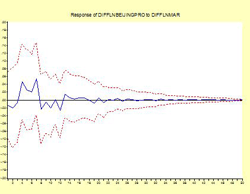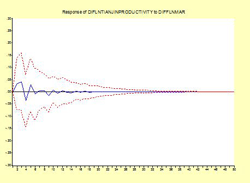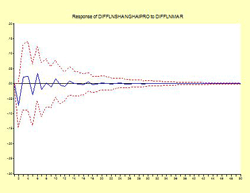| Author Name | ZHAO Ting (Zhejiang Gongshang University) /ZHAO Wei (Visiting Fellow, RIETI) |
|---|---|
| Download / Links |
This Non Technical Summary does not constitute part of the above-captioned Discussion Paper but has been prepared for the purpose of providing a bold outline of the paper, based on findings from the analysis for the paper and focusing primarily on their implications for policy. For details of the analysis, read the captioned Discussion Paper. Views expressed in this Non Technical Summary are solely those of the individual author(s), and do not necessarily represent the views of the Research Institute of Economy, Trade and Industry (RIETI).
Since the pioneering work of Glaeser et al (1992), the dynamic externalities of agglomeration in three different senses, e.g. MAR, Jacobs, Porter, have become one of the major focuses of economists specializing in regional/spatial studies as well as stimulating increasing empirical interest among them. As one of the largest emerging market economies and with the fastest growth in the world over the past three and a half decades, China and its cases naturally cannot escape the attention of such researchers. However, the empirical studies covering or utilizing the Chinese cases hitherto show at least two defects. One connects to the choice of sample regions. Most empirical works adopt the Chinese provincial region data without considering compatibility in regard to spatial size and the real implication of externalities of economic agglomeration. A typical Chinese province is much bigger than a similar administrative region--for example, a state in the United States, a province in France, or a prefecture in Japan--in terms of either land coverage or population size. It is fairly clear that almost all studies around this topic that are based on the cases of the United States and other industrial countries, rather than those of China, chose cities and even towns as their sample region-units, which is closely consistent with the nature of the issue checked--externalities of industrial agglomeration in a limited area. Most studies that use Chinese provincial regions for their samples are actually inconsistent with that. Another defect originates from the method of selecting and dealing with the data available in empirical work. Almost all research covering this issue makes use of panel data rather than time-series data as the latter is believed to be insufficient in fully revealing the externalities of agglomeration.
Starting from a critical review of the empirical works on the dynamic externalities of agglomeration, this paper extends its focus to the Chinese metropolitan areas with necessary revision and adaptation of the methods innovated and improved upon by earlier researchers. Taking China's top three municipalities--Beijing, Shanghai and Tianjin--as sample regions, it investigates empirically the effects of the three types of dynamic externalities on manufacturing productivity using the time-series method and makes comparative analysis. The main findings in this paper include: a) all three types of dynamic externalities measured in labor productivity can be found in the top three metropolitan areas, but large differences in the degree and direction of effects exist among them, b) the specific effects vary with different time lags introduced, and c) the positive effects of these externalities seem substitutable for one another. Specifically, if MAR externalities contribute the most to productivity growth in one city, then the Jacobs or Porter externalities would do less, and vice versa.
| a. Beijing | b. Shanghai |
| c. Tianjin |
Table 1 is a summary of the contribution of the three types of externalities to the increment of the manufacturing productivity of the top three Chinese metropolitan areas.
| Cities | ||||
| Beijing | Shanghai | Tianjin | ||
| Types of dynamic externalities | MAR | 10% | 15% | 15% |
| Jacobs | 5% | 15% | 5% | |
| Porter | 5% | 10% | 25% | |
The above results show that the local industrial structure seems to exert a real influence on the performance of externalities. A better understanding of these phenomena is required for the formulation of policies to create incentives for diversity and specialization that may result in rather long-term effects.




